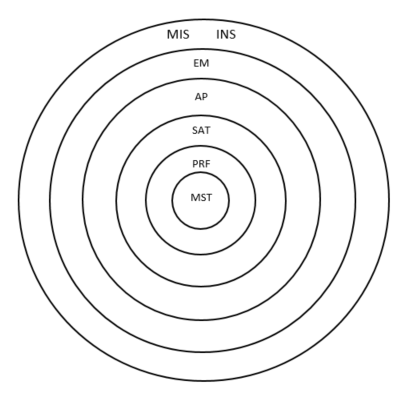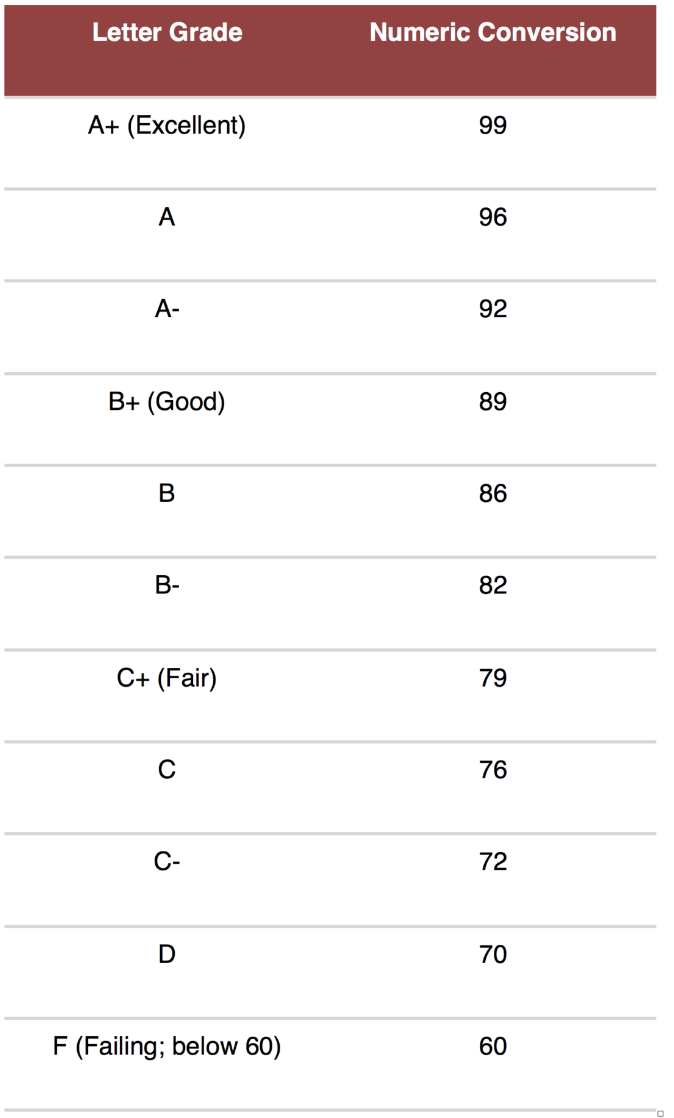Grading Systems at Akins Early College High School
Standards-Based Grading
Secondary Student Course Catalogs
Akins Early College High School follows a campus policy called Standards-Based Grading for all classes except UT Onramps, ACC Dual Credit, and College Board Advanced Placement courses. This is a researched concept that allows students to learn at their own pace and demonstrate knowledge of the content they are learning at multiple points. You will not be graded on a 0 -100% scale as you have been in the past. Instead, you will have to switch your thinking to more of a growth mindset. Think of a target.
Onramps, ACC Dual Credit, and College Board Advanced Placement courses. This is a researched concept that allows students to learn at their own pace and demonstrate knowledge of the content they are learning at multiple points. You will not be graded on a 0 -100% scale as you have been in the past. Instead, you will have to switch your thinking to more of a growth mindset. Think of a target.
When you throw an arrow at a target, you can hit it in different spots. Your ultimate goal is the bullseye, however the first time you throw the dart, maybe you land on the outside of the target (INS). The next time you throw the dart maybe you land closer to the center (AP). Finally, on your third throw, you hit the bullseye (MST). That is how your assignments will be graded.
|
MST (MASTERY) -This means the student has mastered the concept. The student understands every aspect of it, and always gets the information right. The student is also able to explain the concept to somebody else. In other words, “Ask me anything, I will get it right.” This translates to 100% in the gradebook. |
|
PRF (PROFICIENT) - This means the student is at a proficient level of understanding of the concept. The student understands the concept in its entirety and can almost always get the correct answer when asked a question about the concept. In other words, “I usually get it, but sometimes I might make a little error.” This translates to a 90% in the gradebook. |
|
SAT (SATISFACTORY) - This means the student demonstrates a satisfactory level of understanding of a concept. The student understands the concept pretty well but is still missing some key points. In other words, “I get it mostly, I just need more practice.”This translates to an 80% in the gradebook. |
|
AP (APPROACHING) - This means the student is approaching the understanding of the concept and is demonstrating a little more than a basic understanding of the concept he/she is learning about. In other words, “I kind of get it, a little bit.” This translates to a 70% in the gradebook. |
|
EM (EMERGING) - This means the student has demonstrated an emerging level of understanding of a concept. The student's work shows understanding is at a very basic introductory level. This translates to a 60% in the gradebook. |
|
INS (INSUFFICIENT EVIDENCE) - This means there is insufficient evidence to assess the student on a concept. This is the grade that will be given for a COMPLETED assignment that is turned in completely incorrect and shows little to no evidence of understanding of the concept, in other words, “I don’t get it.”. This translates to a 50% in the gradebook. |
| MIS (MISSING) - This means the student was not present when the assignment was given and the assignment has not been handed in as a result. It translates to 50% in the gradebook. |
Students will have multiple opportunities to show mastery of a concept. For example, the first time a student is assessed on an assignment and achieves EM, you will see an EM in the gradebook that averages as 60%. A few days later after completing the homework and classwork for that concept, the student should retake the assignment to show growth meaning the student is assessed as proficient or higher. If the student is assessed higher than EM, the grade will then change in the gradebook.
This means if a student doesn't understand the assignment the first time, they may try again later and always have the opportunity to show mastery.
REVISION FOR STUDENTS:
Redo's can and will occur when announced by the teacher, but you must be eligible. Students have until progress reports of the next grading period to complete work for the previous grading period IF they want to repair a grade from the previous Quarter.
Students have from the end of the Quarter to the next progress report Friday to "repair" or "redo" any grade from the previous Quarter.
All classes follow Standards Based Grading except: ACC Dual Credit classes, UT OnRamps Classes, and College Board Advanced Placement classes. These classes follow a more traditional grading system. See those instructors for further details.
UT OnRamps
1-100 based on UT professors grading system
Students receive two grades; one from the high school teacher of the course (weighted) and one from the professor at UT who is also grading their work. The high school grade is recorded on the high school transcript. The student has the opportunity to accept or decline the UT college grade. If they accept it, it becomes part of their college transcript. If they decline it, it is as if they were never enrolled at UT, but they still get the weighted high school grade on the high school transcript.
ACC Dual Credit Course
Students receive a letter grade from ACC that corresponds to a weighted number grade (+ 10 points) on their high school transcript. How the letter corresponds to the grade is found here: https://www.austinisd.org/ssig/grades-classifications. The grade earned at ACC becomes part of the student's college transcript.

Numerical Grade Request Form (for Dual Credit / ACC / OnRamps Courses ONLY)